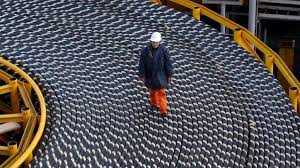As a commentator who argued against the construction of the Basslink cable, recent proposals for a second cable between Tasmania and the mainland have led me to review my position—but not necessarily change it.
It’s easy to argue that Tasmania needs a backup cable and that this could also provide benefits. But it’s not so simple.
The existing cable has brought both benefits and costs. On the one hand, Tasmania could profit from exporting peak power at high prices and from selling renewable electricity when there was a carbon price. It could also import cheap off-peak power from the mainland— increasing its greenhouse gas emissions.

But it costs 2 to 3 cents per kilowatt-hour (kWh), or $20 to $30 per megawatt-hour (MWh), to cover cable costs and energy losses. That’s a lot when, due to excess generation capacity, wholesale prices have been depressed to around $40/MWh in 2015–16 in Victoria, where Basslink feeds into the mainland grid. Peak prices have fallen due to renewable generation, energy efficiency, demand management and industry restructuring.
Basslink provided an excuse for Tasmanian governments to continue to ignore energy efficiency improvement. This would have cut consumer bills, made better use of existing generation capacity and provided benefits such as more comfortable homes and more productive offices. Development of new renewable energy generation in Tasmania has not exactly boomed. Tasmanians are also paying a high price for the failure of Basslink.
So it’s not clear that Basslink has delivered a benefit relative to other paths. A retrospective study of what could have been done with the Basslink money could be interesting.
The economics of an additional cable are very sensitive to mainland electricity prices and the possible reintroduction of a carbon price. The ability of a second cable to provide useful backup also depends on what happens to Tasmanian electricity demand, investment in new renewable energy generation and rainfall for hydro generation as climate change plays out.
To compete with mainland renewable generation, Tasmanian generators will have to factor in the extra cost and energy losses of using the cable, so they would have to be significantly more productive than mainland generators.
Using the money saved by not building an extra cable (maybe a billion dollars or so) to instead invest in energy efficiency and new renewables, as well as revised dam management practices, could avoid the need for a backup cable and offer other benefits.
Also, instead of exporting to the mainland, it may be more profitable to divert excess electricity to running electric vehicles (or, given Tasmanian conditions, plug-in hybrids), which would offset the much higher cost per unit of energy of petrol and diesel fuel, and use a local resource to avoid import costs. And plug-in hybrids can easily switch to petrol if there is a power shortage.
I don’t have the data to make a call on whether or not another cable is a good idea. But I am inclined to be sceptical. Its cost must be compared with alternative options. And the risks of even greater exposure to mainland electricity market vagaries must be carefully weighed up.
Alan Pears, AM, is one of Australia’s best- regarded sustainability experts. He is a Senior Industry Fellow at RMIT University, advises a number of industry and community organisations and works as a consultant. This article was first published in Renew magazine. Republished with permission of the author.










